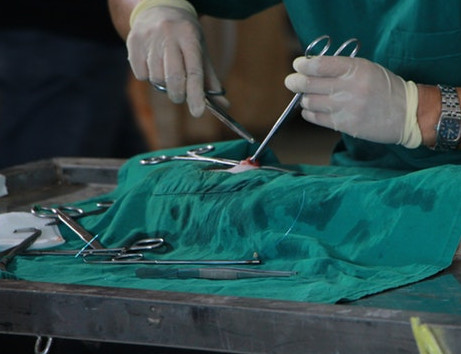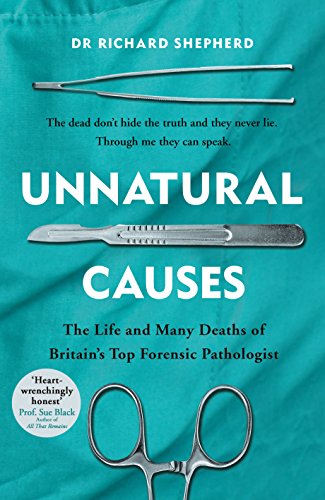The Pathologist's Tale...
CARL – (See list at goodreads)PICTURE CREDIT: Pranidchakan Boonrom at Pexels
Reviewing: Unnatural Causes by Dr Richard Shepherd
The Motive:
“There’s proper science in this, you know! You can’t just wing it!”
It started, as it often does, with Carl shouting. He often shouts at me, but that’s a personified neurosis for you. As it happens, I was confident he was wrong on this one. Authors wing things all the time, and veracity is surely less important than verisimilitude: something needn’t be true so long as it feels true. When I told him this, however, he hit me in the face with a book. And despite being a digital edition it still smarted. Perhaps he had a point: isn’t it easier crafting something that feels true if you can refer to real-world examples?
The forensic pathologist is an enduring trope of crime fiction. The expert scientist, the sounding board, the mentor who plots key dots a detective will eventually join. But it can’t be easy being a trope all the time, and even worse, as Shepherd complains, to be thought a ‘mysterious cloaked butcher’. This book is a persuasive invitation to look beyond the surface of these characters, to open a lifeless stereotype and find out what’s inside. Scalpel, please.
The Evidence:
On one level the book functions as a fascinating but bleak roll-call of UK atrocities. Shepherd’s career began with the Hungerford massacre, in one of the UK’s worst mass shootings, and it progressed through other notorious events: the Marchioness disaster on the Thames, the Clapham rail crash, Rachel Nickell’s murder on Wimbledon Common, the racially motivated stabbing of Stephen Lawrence, and many more besides. Since his career seems to span much of my adult life, his writing inspired several flashbulb moments, dragging me back to news headlines of the past. But for this reader, the book was about more than that: I found the human insights Shepherd revealed to be fascinating.
Imagine explaining to your children that they caught you stabbing the Sunday roast to help you develop insights into knife crime. And gaining such expertise is a key point: we understand the developing skill of a mechanic, or a baker, and the requirement to strip countless engines or decorate innumerable gateaux is not something we flinch from. But we seldom consider the career that progresses by opening one human body after another (over 20,000 in Shepherd’s case), that advances by removing, examining and classifying major organs by damage and disease, that must maintain professionalism in the face of victims whether young, old or anonymous body parts. But Shepherd makes clear that this is what it takes for a civilised society to discharge its duty to the dead: to know why someone died, and reduce the chance of their fate befalling others.
He talks about other uncomfortable topics too. In his sphere, our society expects absolute truth, despite the limitations of evidence and the common flawed humanity of our public servants. Shepherd points out that since death classification is a human endeavour, it should be unsurprising that there are fashions in causes of death, whatever the apparent rigour of the international classification system might suggest. Shepherd’s career spanned the rise and fall of SIDS (sudden infant death syndrome). He explains how SIDS peaked and declined as a cause of death for very understandable human reasons – but that wouldn’t prevent professionals losing reputations and careers over a disputed classification, as almost happened for Dr Shepherd. In some jobs, society can’t allow much latitude for mistakes. We ought to be grateful that we produce enough remarkable individuals willing to place themselves into that kind of crucible.
The Verdict:
This is a great book. I’ll be dipping into it when I write about pathology and remembering it when I consider the humanity of my characters. Carl was right: with books like this, we shouldn’t have to just wing it.



Recent Comments